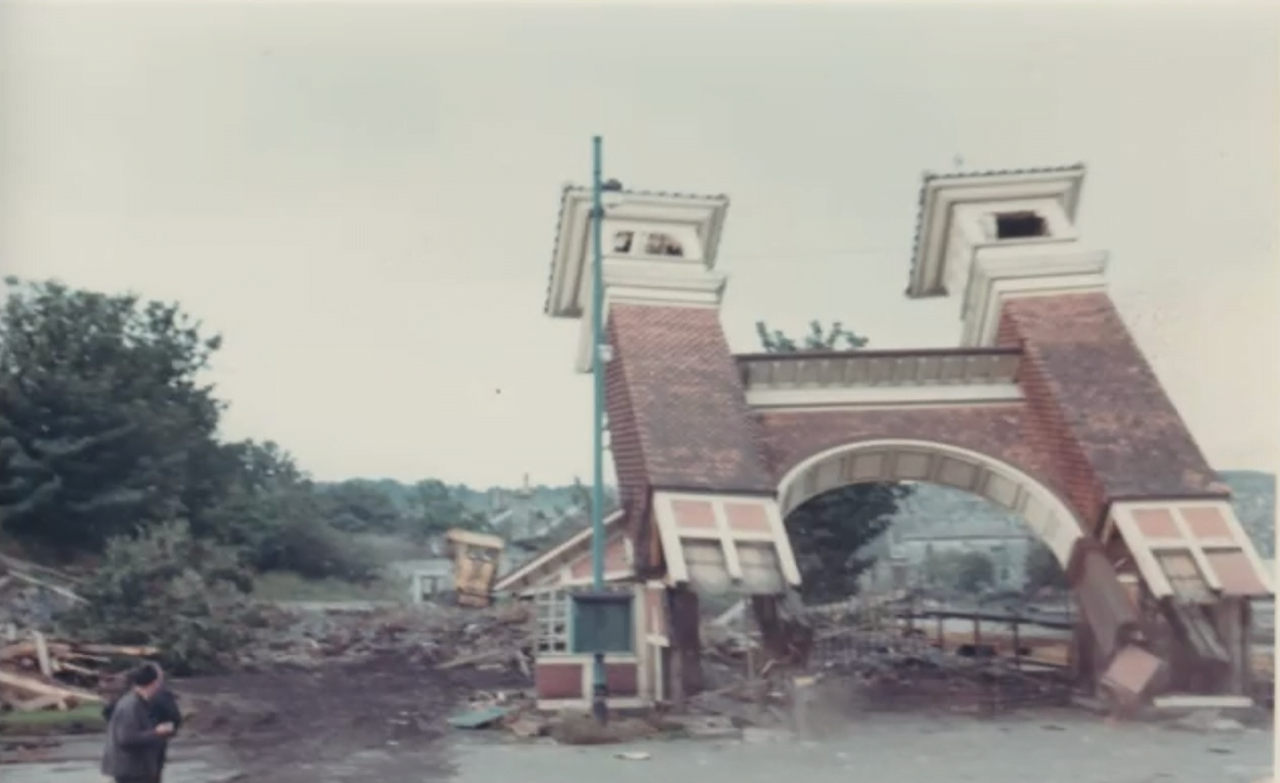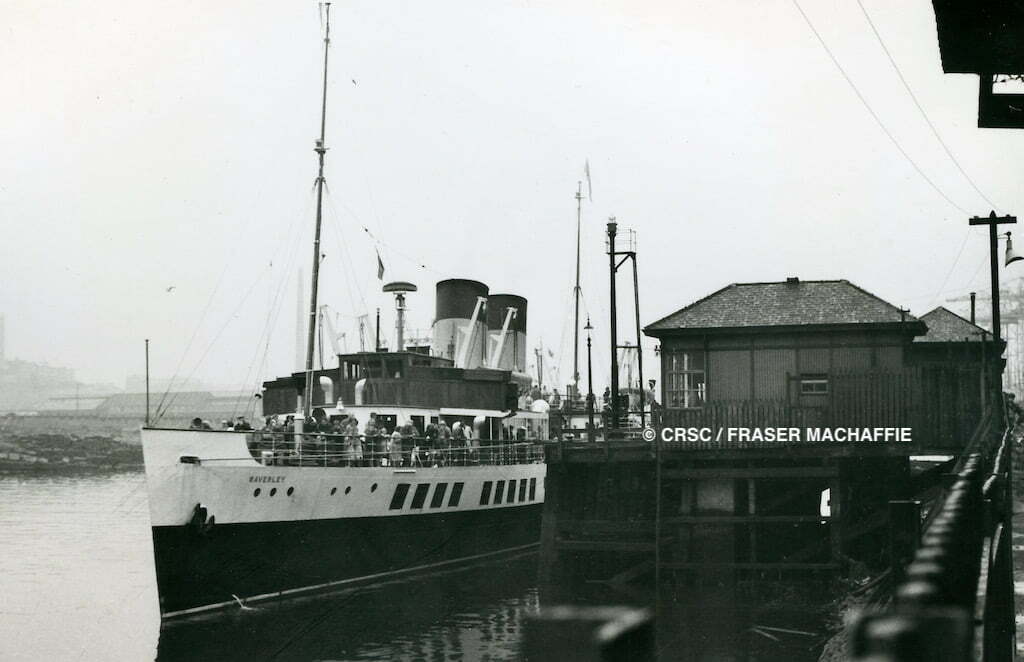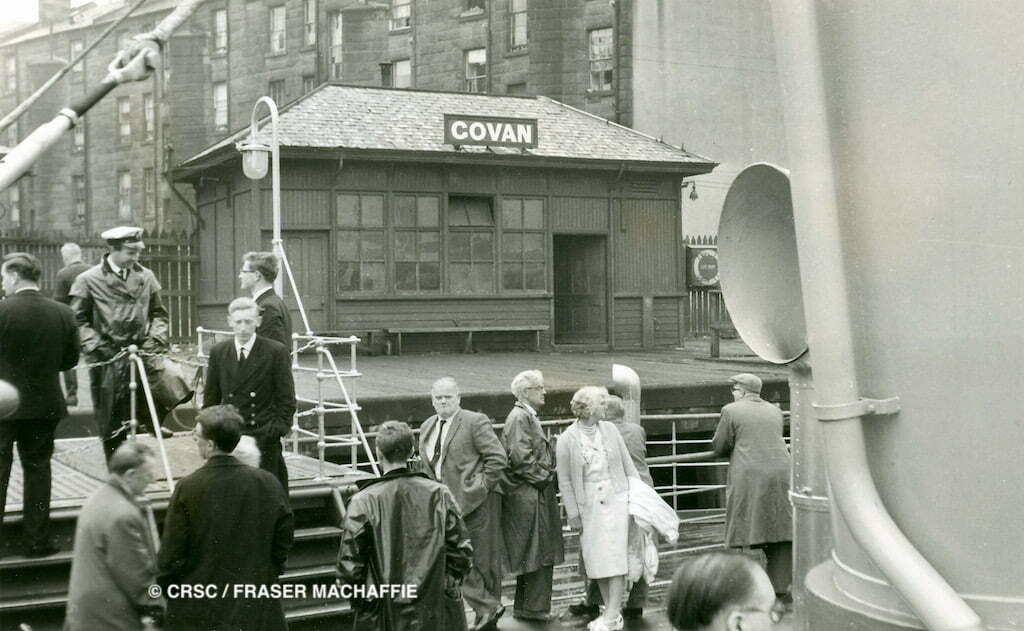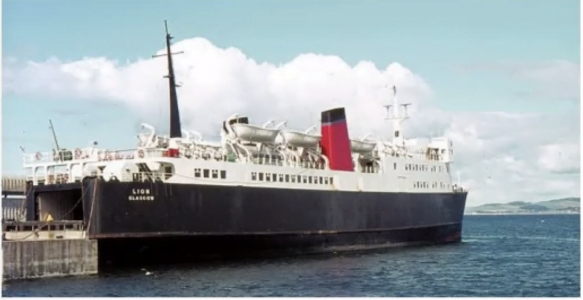At CRSC’s latest Zoom get-together on Wednesday 8 December, John Riddell threw the spotlight not so much on the steamers themselves as on the piers and harbours they served. It made for some intriguing perspectives, writes Donald Thomas.
John Riddell’s presentation on piers and harbours of the Clyde was well researched and detailed. Acknowledging there were too many ports to do the subject justice, he limited his coverage to those on the south side used by steamers. The large Zoom audience was treated to an entertaining if unusual talk, illustrated with images from a variety of sources including historic maps from the National Library.
Beginning with a geography lesson, John informed us that ports are needed for fishing, trade and coastal communication. Specific uses have changed over the years. While natural and improved harbours provide shelter, they may not have adequate depth of water at all states of tide. Piers built out from the shore provide depth but are less sheltered. River mouth ports often have problems with silting or a sand bar.
From Girvan Harbour in the south, John progressed through the ‘Ayrshire coal ports’ and finished with the mainland ferry piers further north, describing the history and features of each.
The river mouth location at Girvan required a pier and a breakwater as it developed, but had insufficient depth for later trade. Its southern location also meant that it was too far from the Clyde islands for regular trade but it has seen use by visiting excursion steamers.
The ‘coal ports’ was a new collective name to me for ports between Ayr and Ardrossan. John explained how, in the early 19th century, wealthy landowners protected their interests by developing individual infrastructure. Technology progressed from the early ‘coal hurry’, where wagons were tipped into the ship’s hold, to modern powered hoists. Today Ayr remains successful with trade in coal, wind turbines and timber.
The Earls of Eglinton planned and began construction of a canal to maximise trade though Ardrossan, but their plans were overtaken by the advent of the railways. Connections with Ireland have long been important to the area, but the service from Troon has now moved south.
It was interesting to hear of day return trips in 1850 from Glasgow to Belfast via Ardrossan. Steel for Titanic passed through Ardrossan on its way to Belfast.
Ardrossan was viewed as the limit of commuting from Glasgow, so ports to the north (served in particular by the G&SW and Caledonian railway companies) vied for this type of passenger trade.
John had interesting stories about the history of Fairlie, Largs, Wemyss Bay and Greenock. From his time at sea, he showed an image of the demolition of the last towers of Princes Pier Station, and there were rare photos of long defunct river piers such as Govan.
This thoroughly enjoyable and informative presentation is available for Club members on video here.
If you have not yet paid your 2021-22 CRSC subscription, please do so here.

The port of Troon: the photo shows a cross-channel catamaran ferry, but the town’s longstanding connections with Northern Ireland have now lapsed

Until their demolition in 1967, the Italianate towers of Princes Pier, Greenock, formed the most imposing frontage of any railhead on the Firth
Postscript: In his address to CRSC on the harbours and piers of the south coast of the Clyde, John Riddell commented on the paucity of photographs of steamers at Renfrew and Govan. Fraser MacHaffie has now supplied photos of an unscheduled call by Waverley at Govan on 17 July 1964. He says Waverley was on the return leg of a Friday Up-River Cruise, and fog on the river required the paddler to tie up briefly. Fraser made a similar call at Govan with Caledonia in September 1961, when congestion on the river, caused by half of a ship being navigated downstream, obliged her to tie up briefly. He writes: Caledonia was on the 11am Kyles of Bute sailing from Bridge Wharf replacing Queen Mary II, having the previous day been stormbound at Princes Pier during one of the worst summer storms to hit the Clyde: she was sailing with a salt-encrusted funnel back to the Wharf.

Waverley at Govan on a foggy Friday, 17 July 1964: she was on the downriver return voyage of an up-river cruise from Largs

Waverley at Govan: assistant purser Leslie Brown faces the camera while behind him assistant purser Jim Davis is talking with mate Roddy Murray. On the paddle-box far left, with his back to the camera, is purser John Brewster. Fraser MacHaffie is standing in the foreground on the left (in navy coat, back to camera) next to Peter Herriot in raincoat
Published on 12 December 2021














